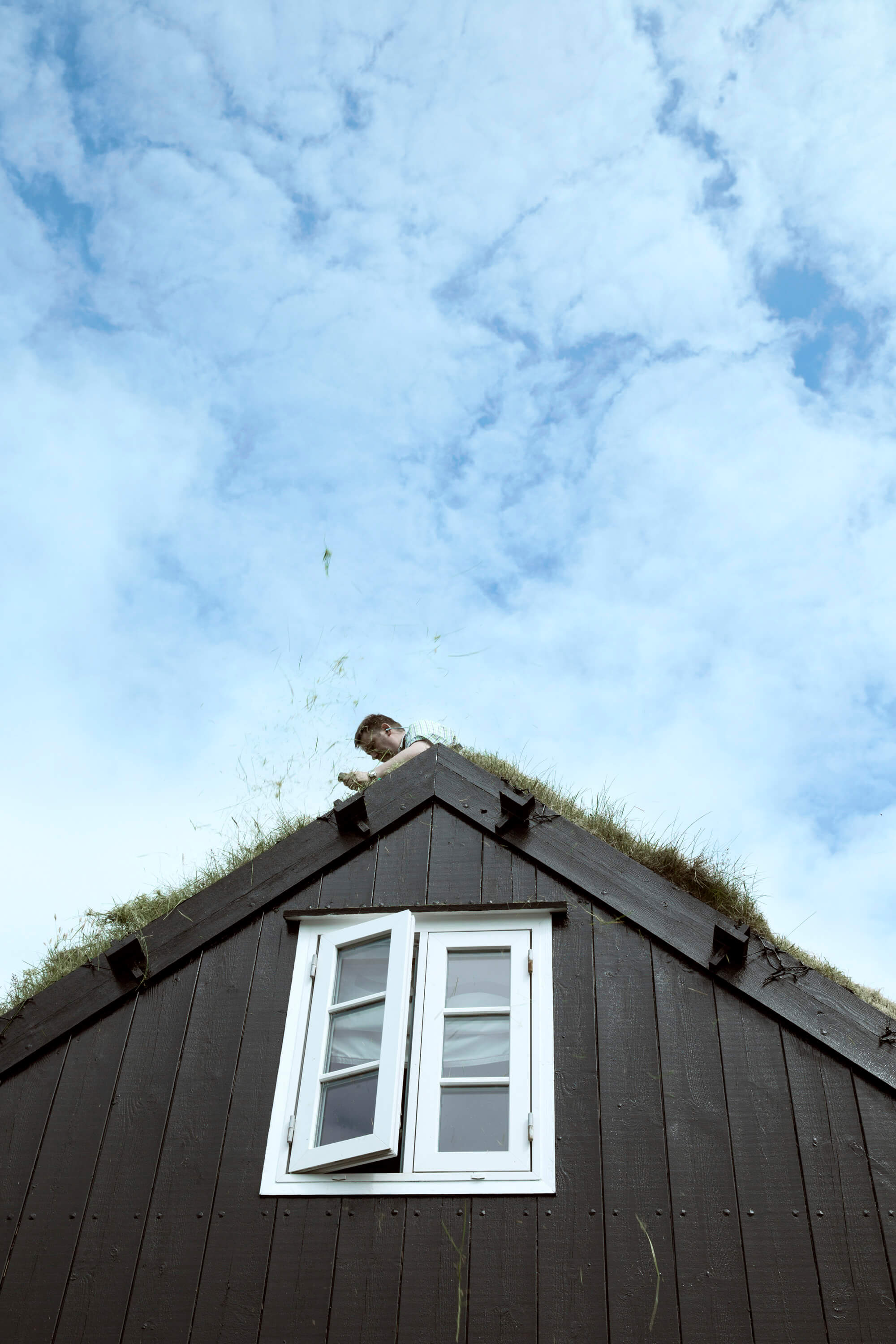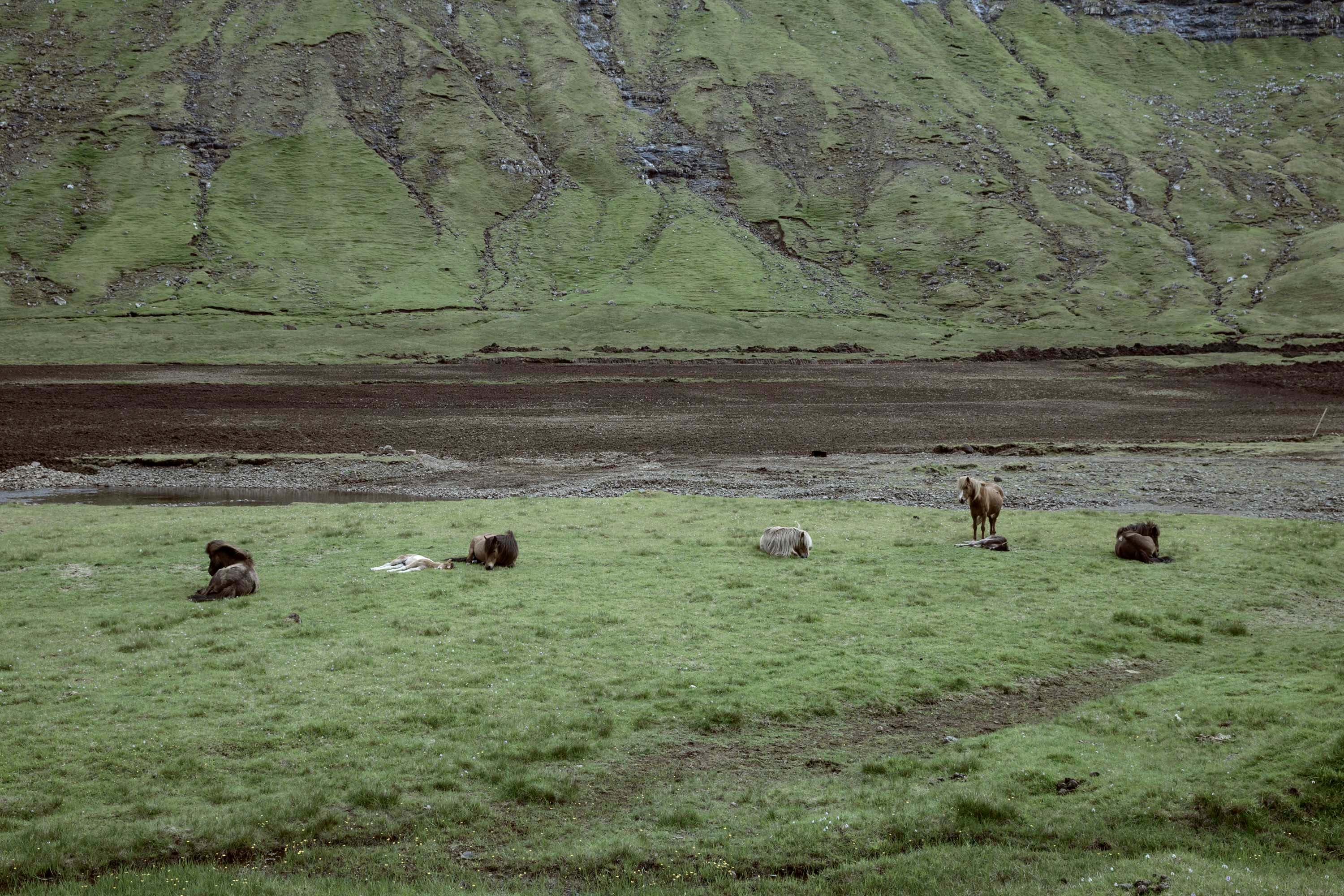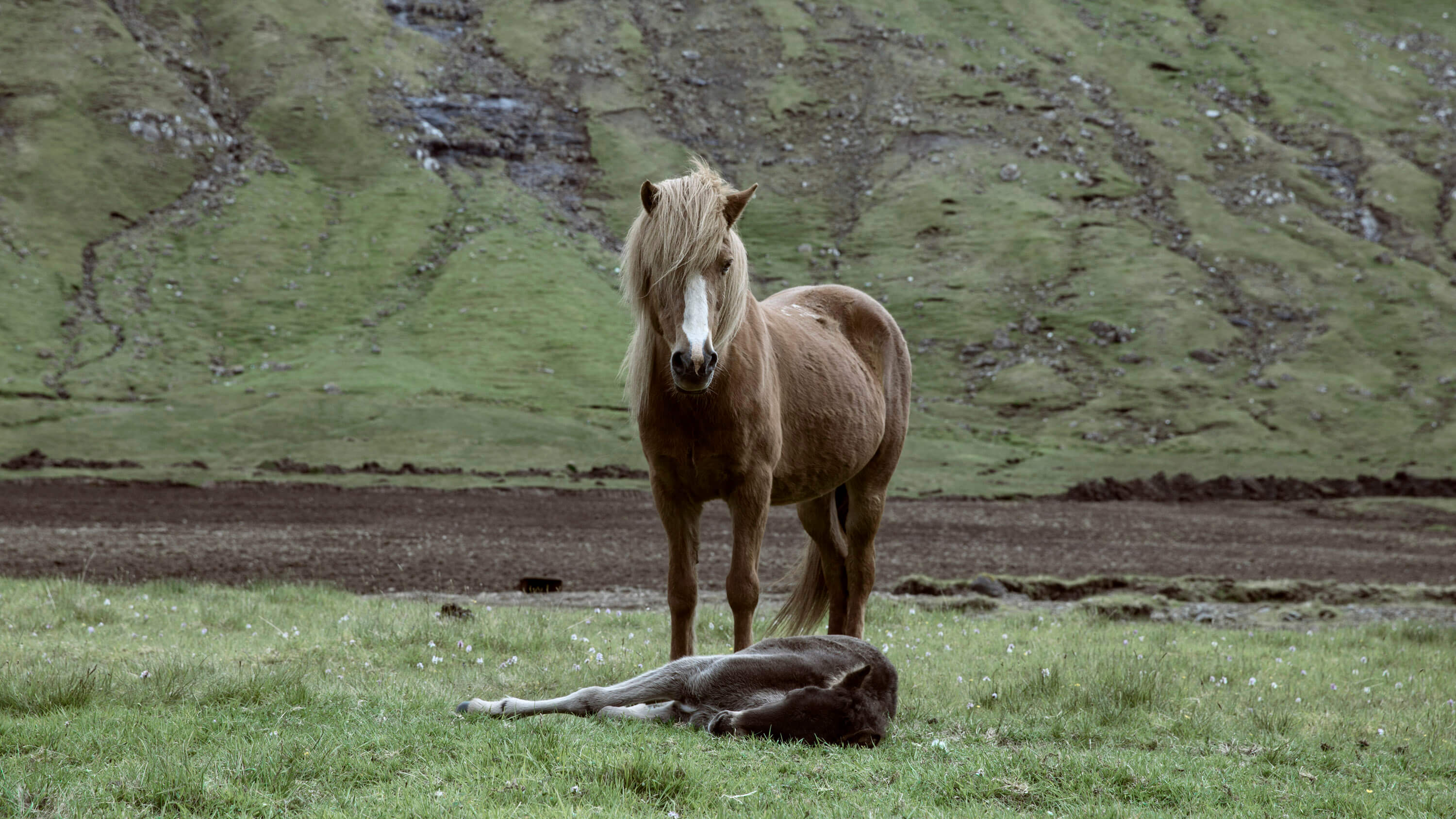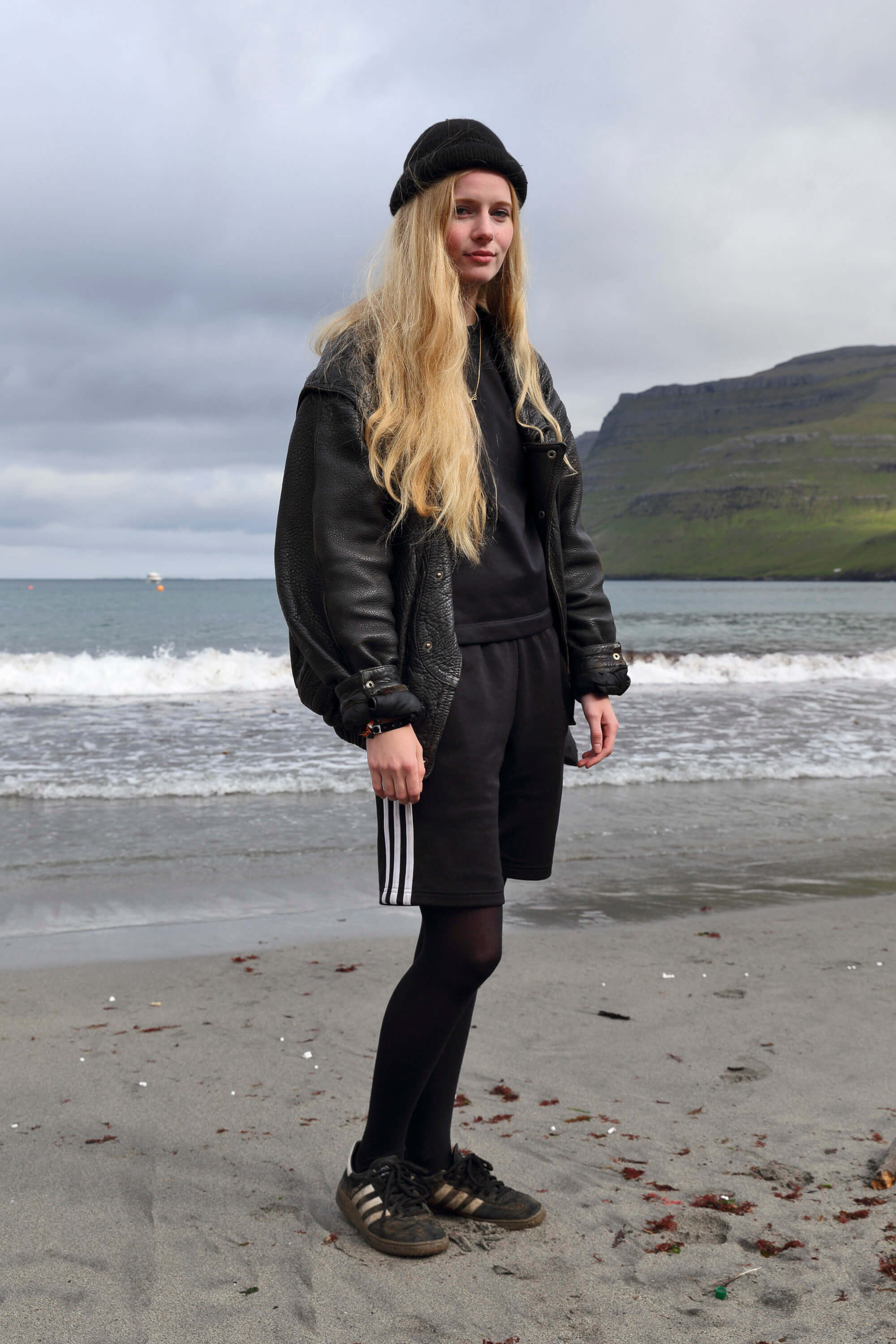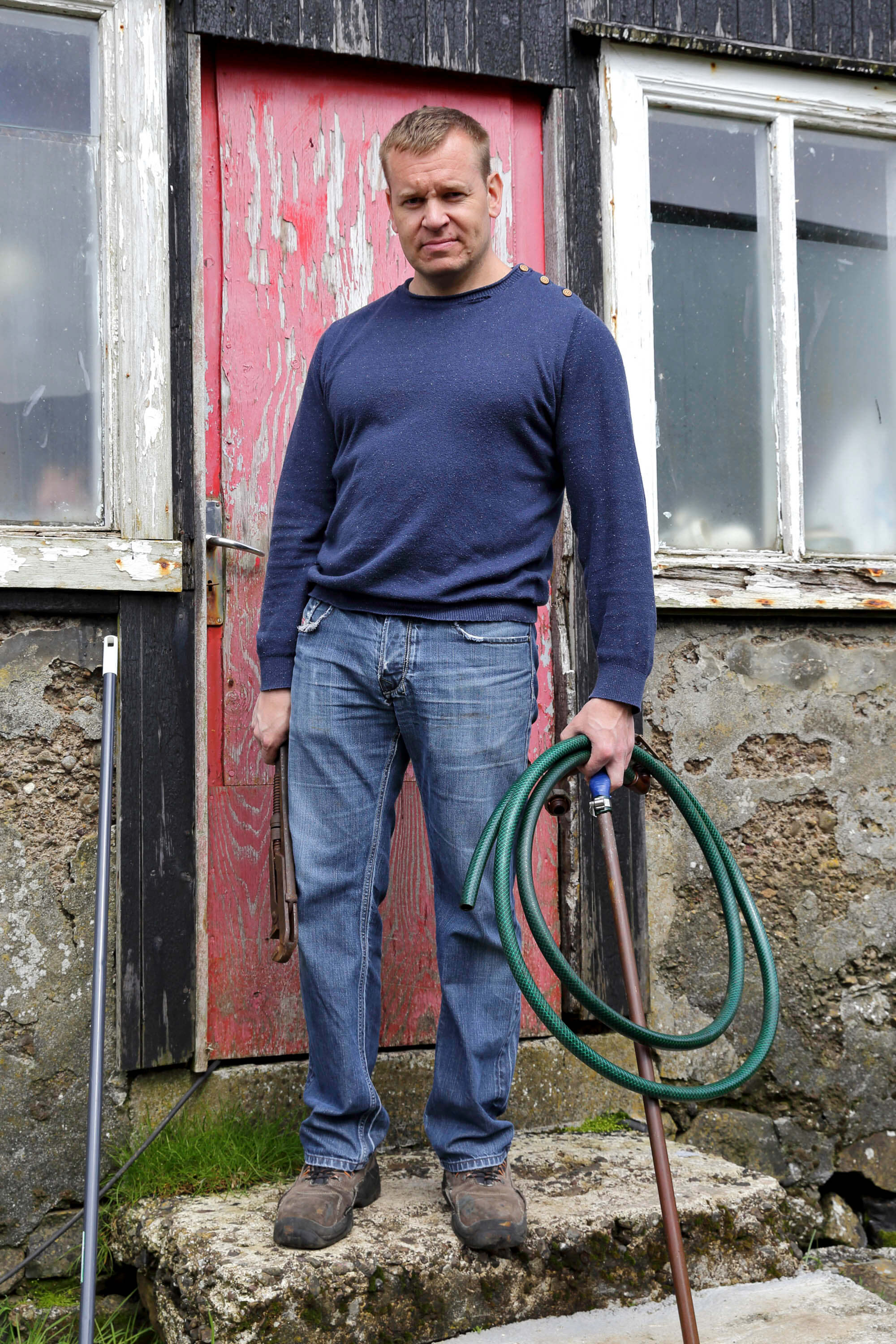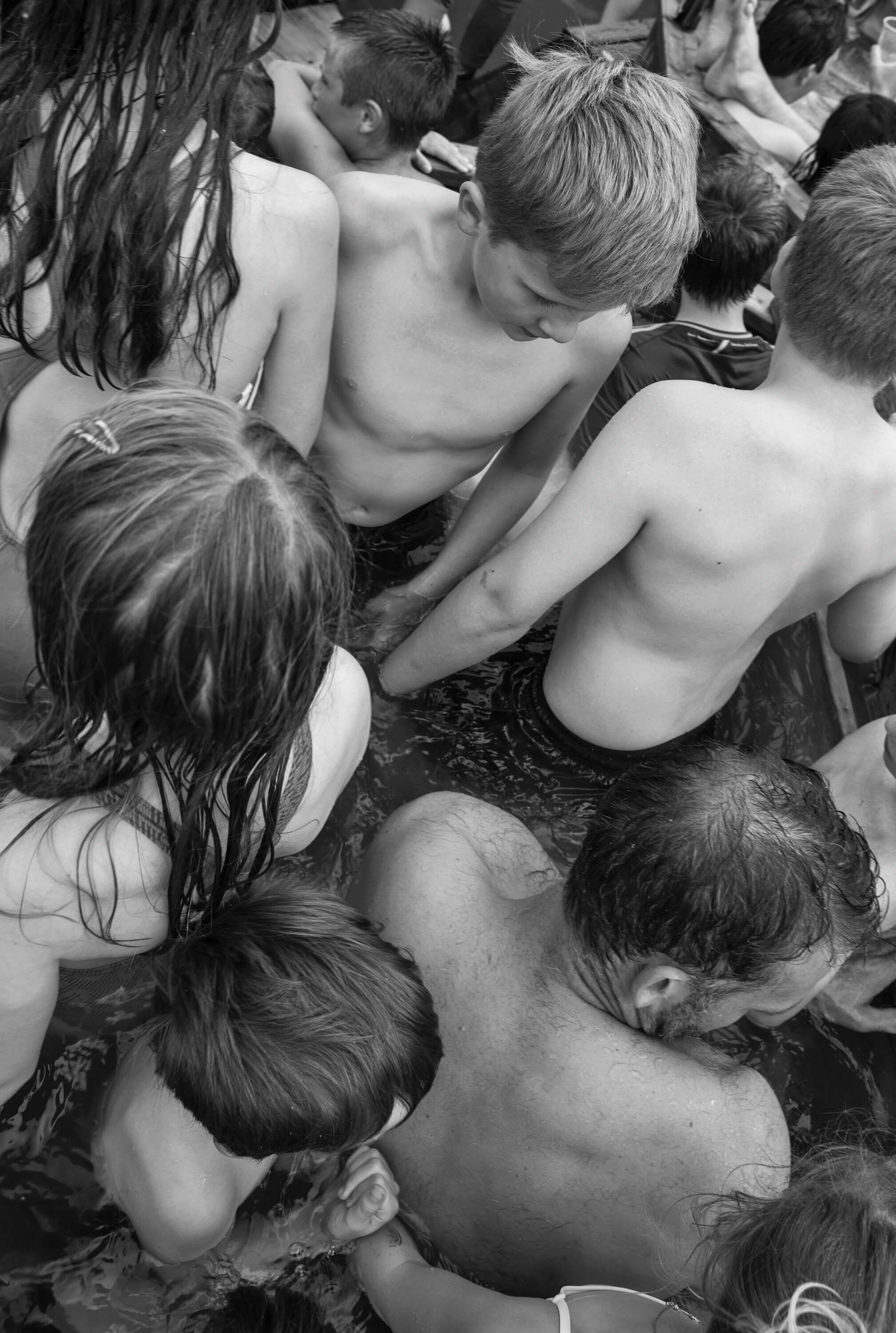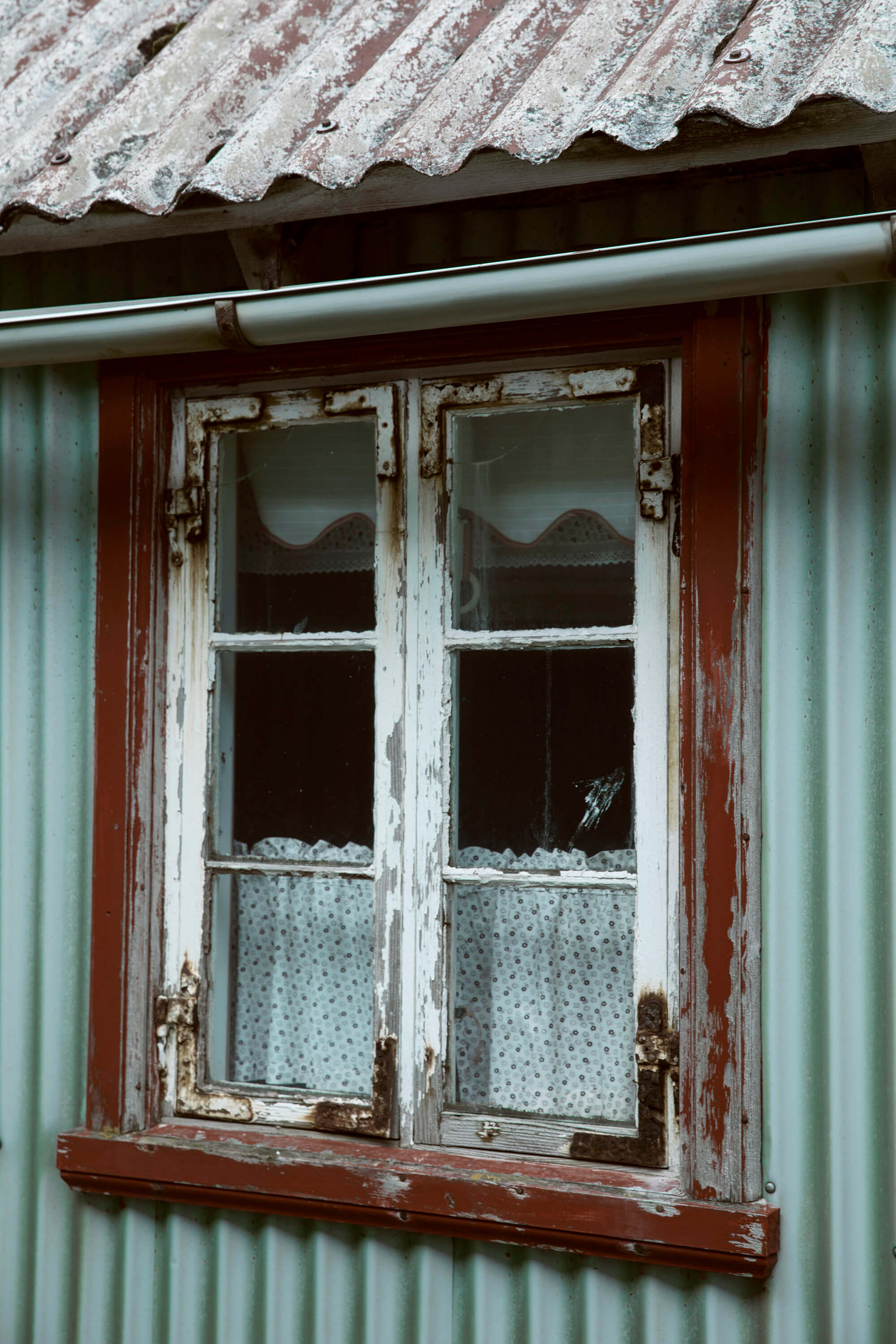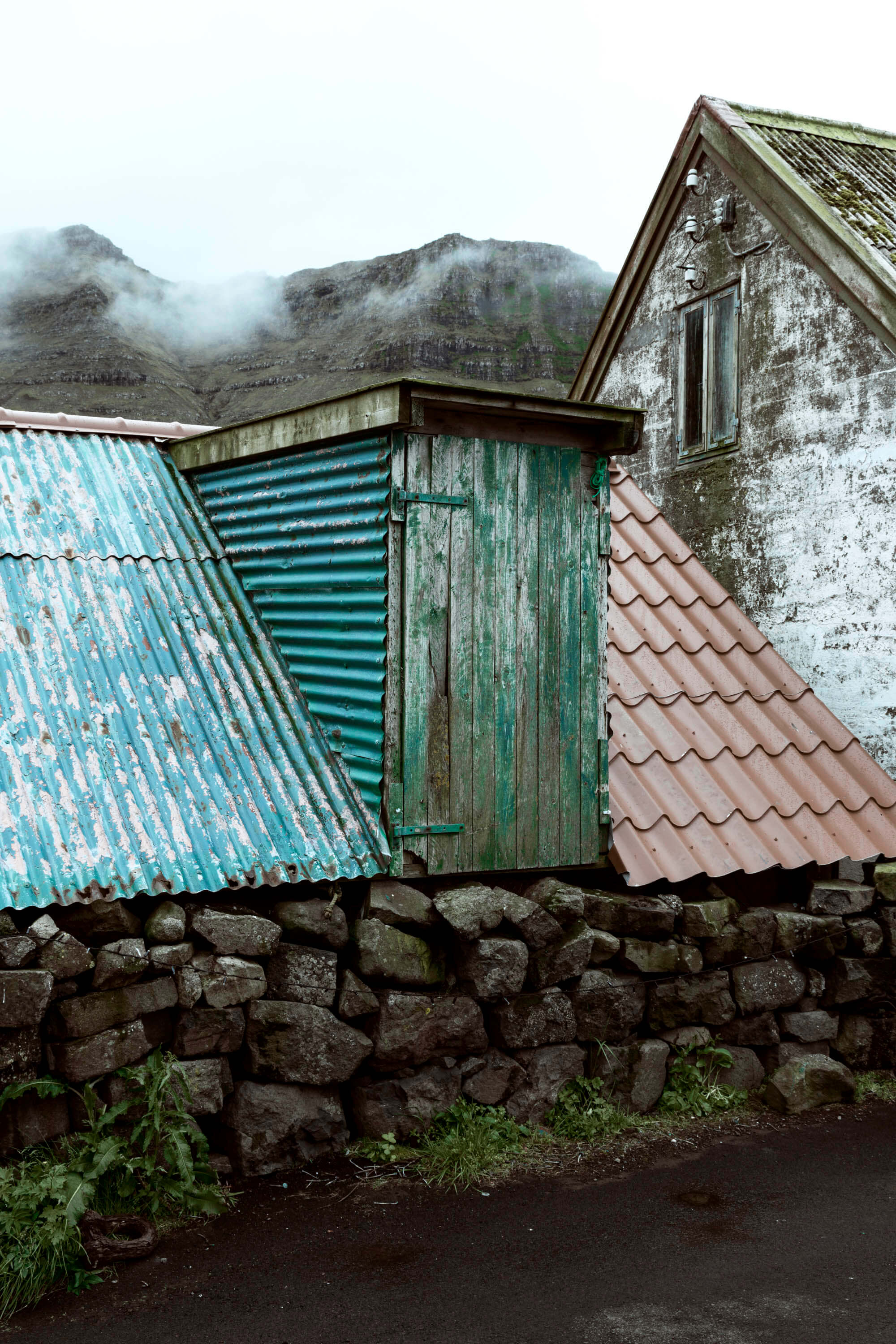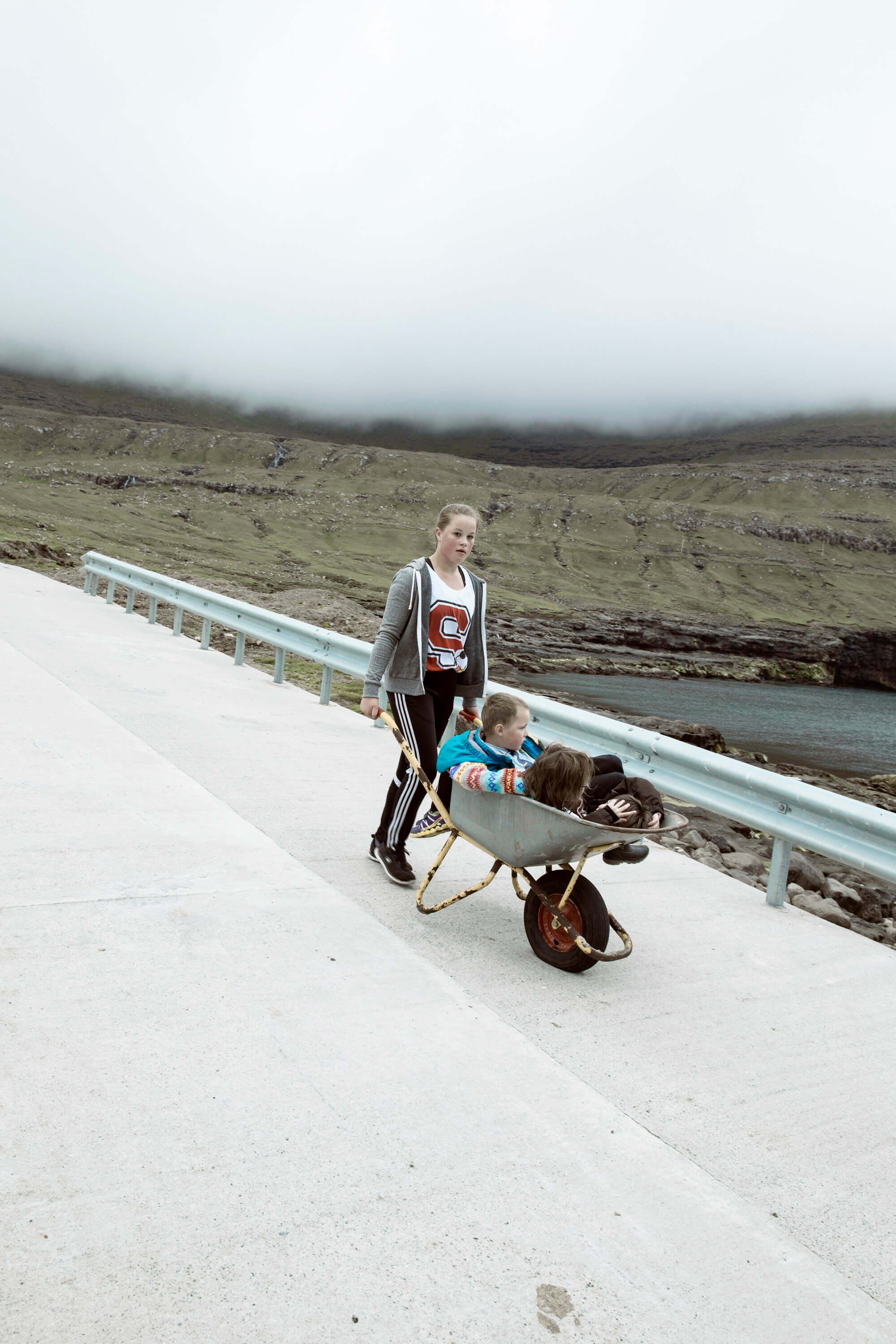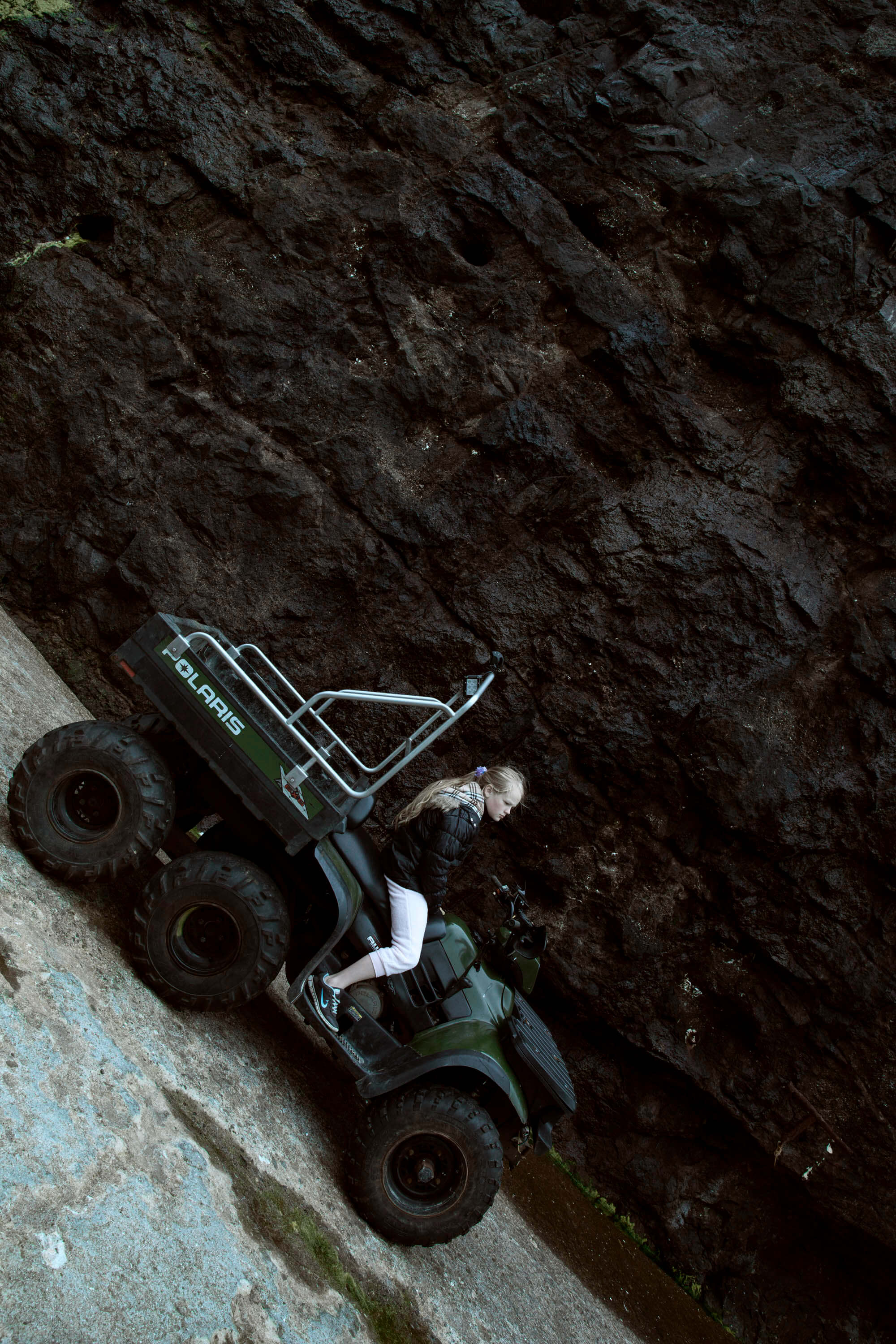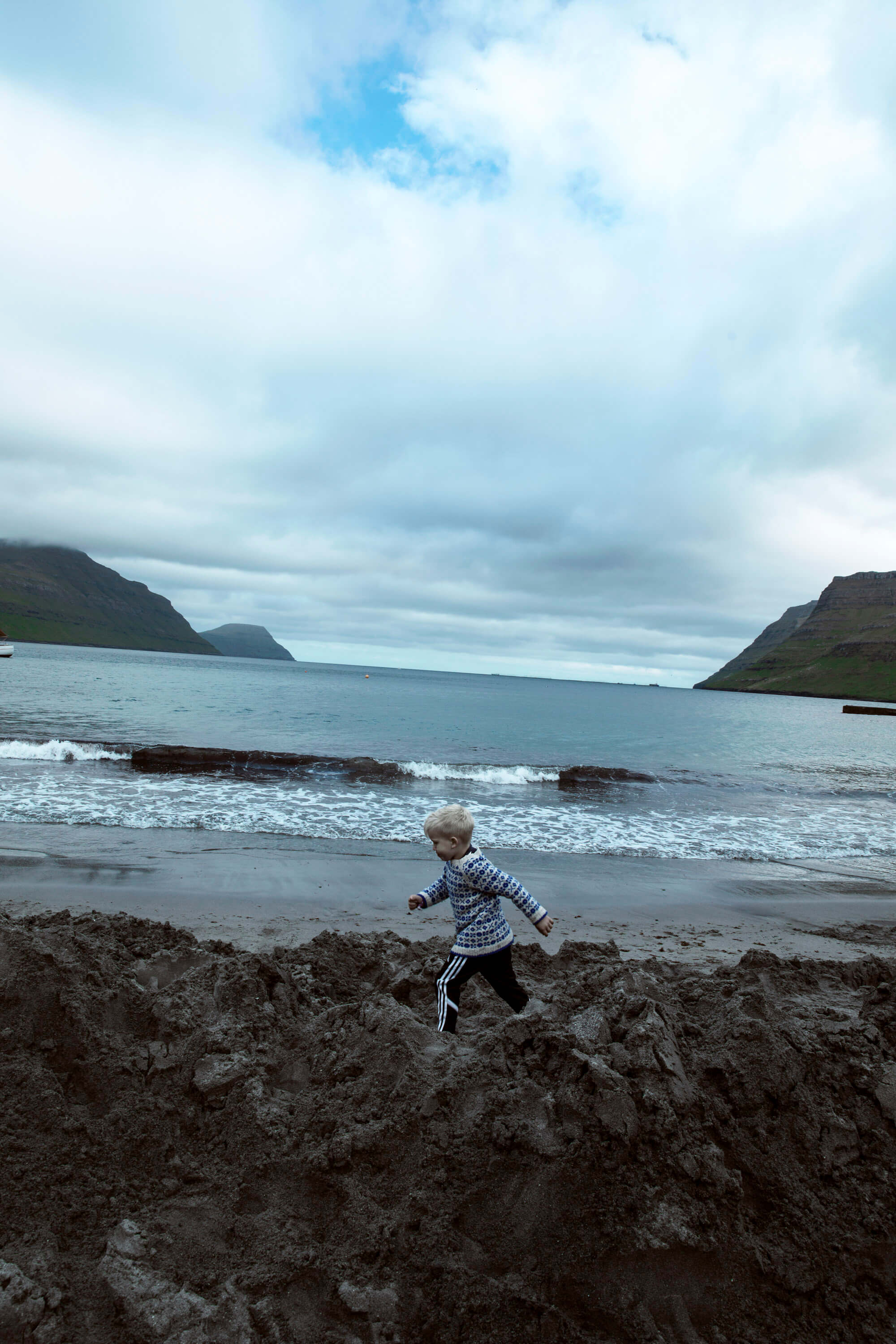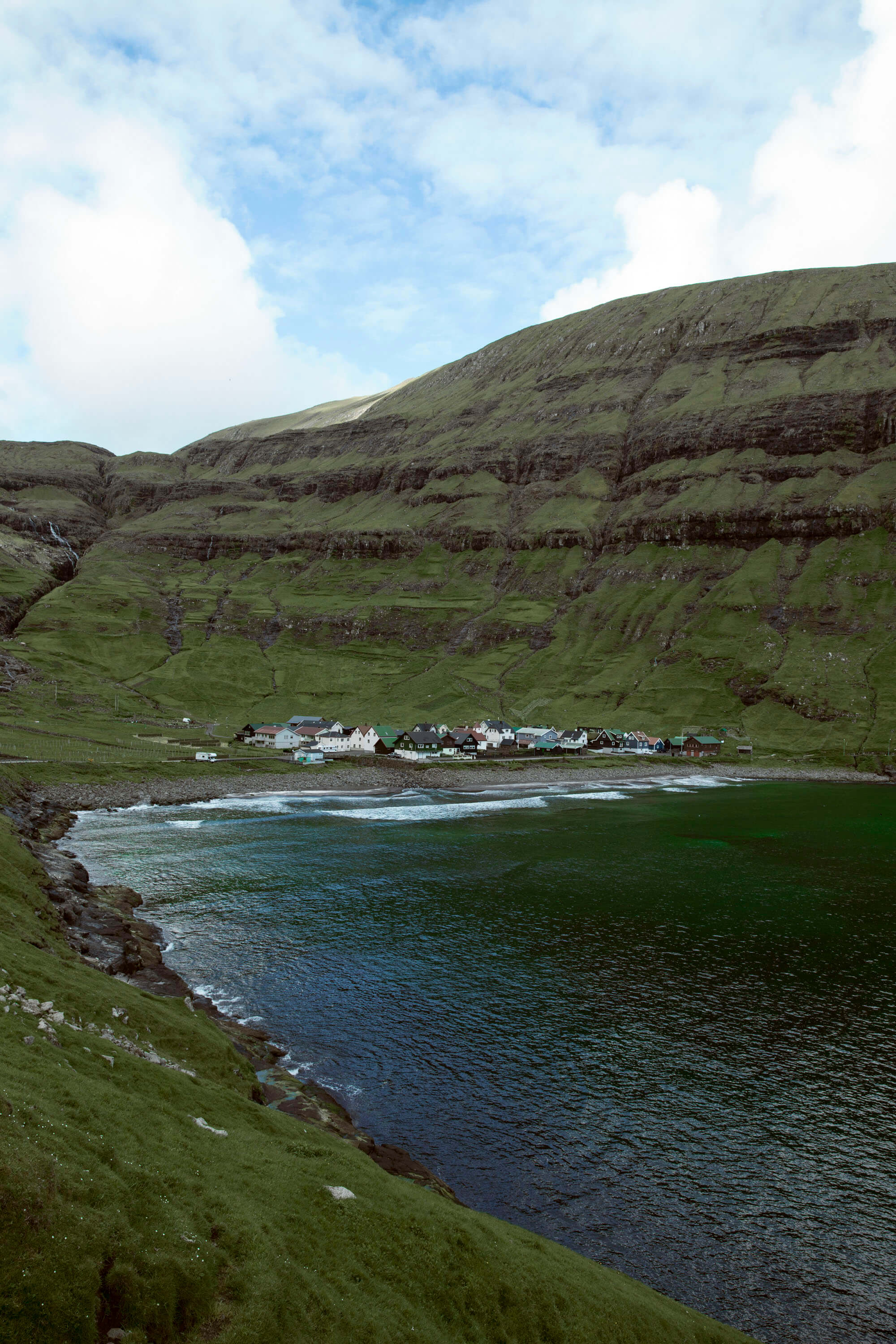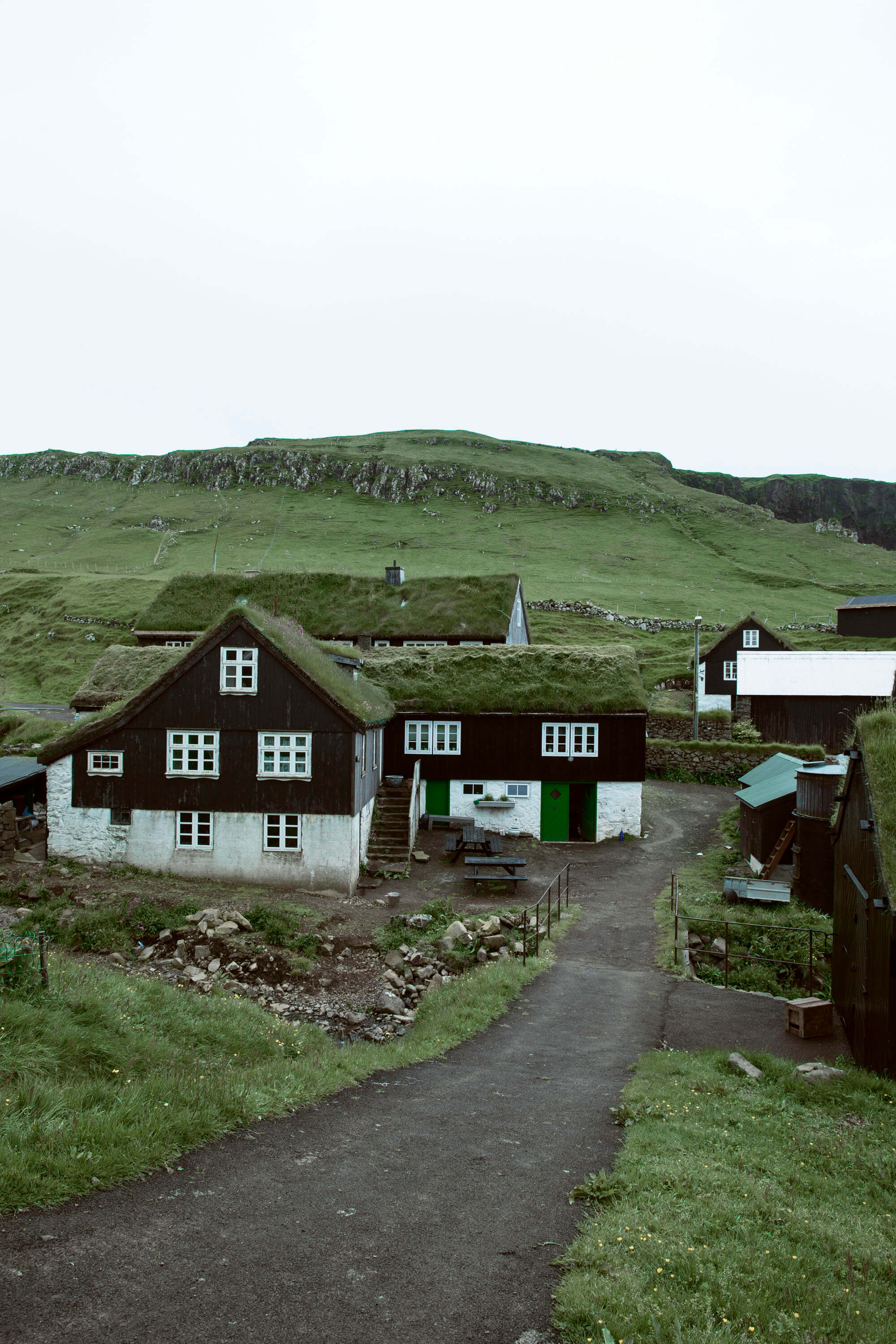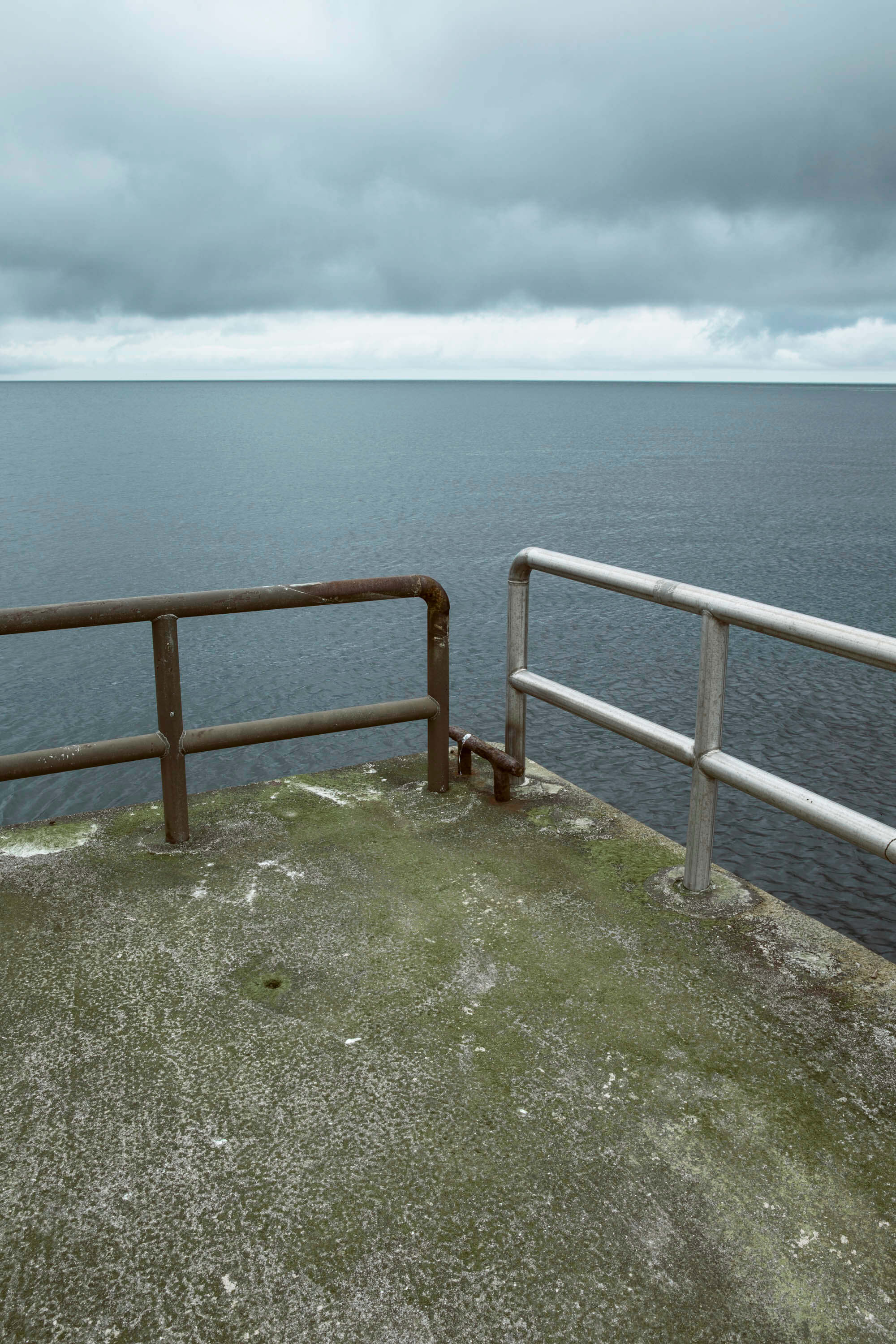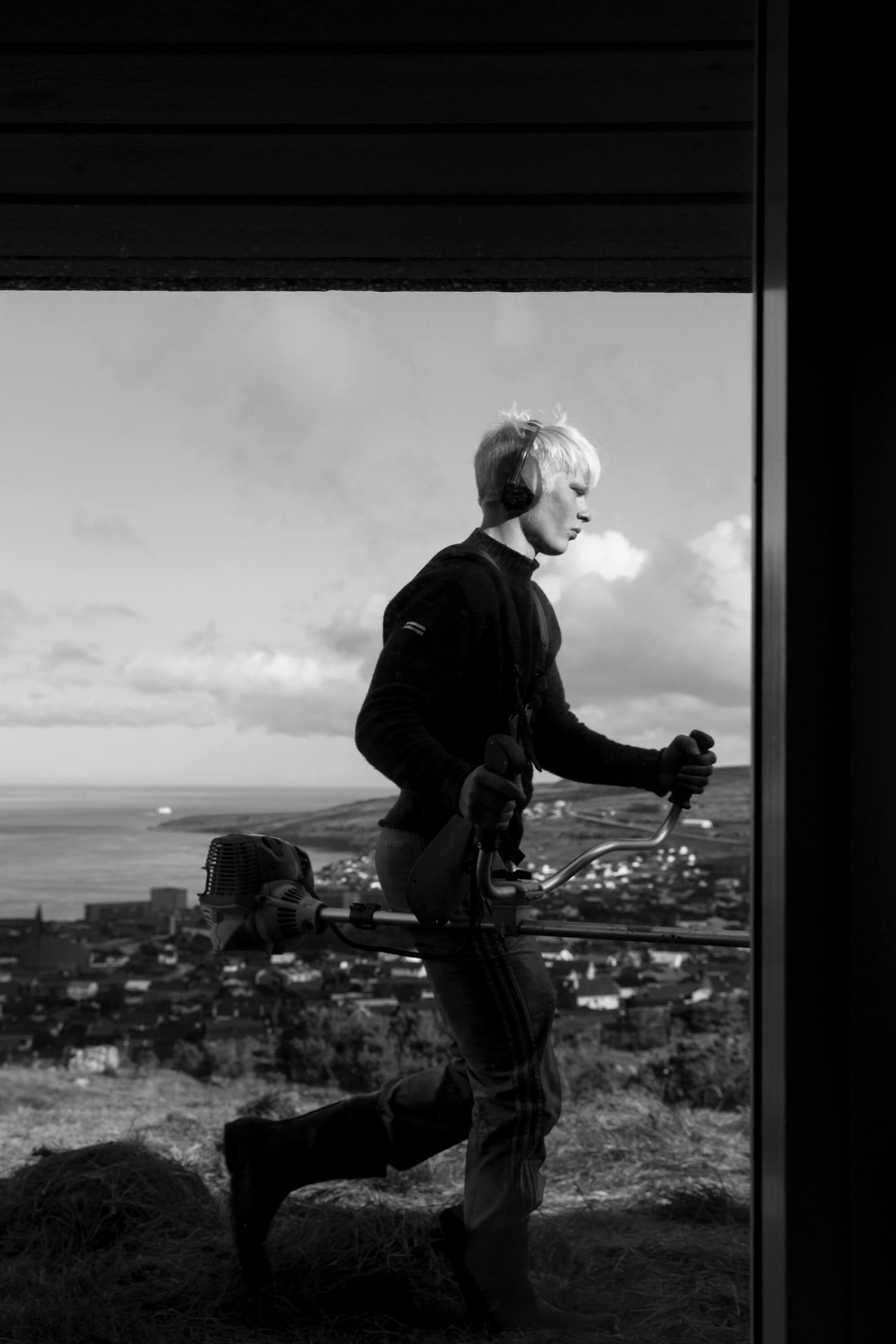The Faroe Islands, green desert for a Nordic summer experience reminiscent of a carefree and dishevelled adolescence. Autonomous country within the Kingdom of Denmark, tiny archipelago often likened to Scotland, Norway, the Shetlands, the Orkney Islands, the Hebrides and Greenland. “Island of sheep”. And puffins, grass, moss, basalt, Arctic light, running water, sagas, grass-covered roofs. Island of miniature villages – Gjógv, Tjørnuvík, Saksun, Mykines, Syðrugøta, Klaksvík, Svínoy, Fugloy, Kirkjubøur, Gásadalur, Bøur – all fringed by the northern Atlantic Ocean.

That year Atlantic Airways started a direct flight connecting Italy to the Faroe islands. One spring ago I began to shyly repeat “Faroe islands” to myself, in that same elementary way I increasingly frequently realized was how I ended up choosing my next destination. Eighteen remote islands in a cold sea, a small archipelago to the north of Scotland and the south of Iceland. Then I understood I didn’t need to beat around the bush to tell people where I’d got it into my head to go, because the Faroes were absolutely present in the heads of whomever I met. What to me appeared an archipelago of my imagination, even though I could point to it quickly on a map of the great northern Atlantic, was known to the most ordinary people. In some way or other, I mean.
“They’ve got a national football team,” my taxi driver told me, waving me off and closing the boot of his car with a routine gesture. “They’d tried a direct flight from Milan and one from Barcelona, and Barcelona won in the end, so you’re coming in from Copenhagen, right?” asked Xavier, a young Dutch man with a lined jotter, tent on shoulder and ten-month-old baby at home with his girlfriend. “He’s called Oscar. He’s shown me what’s best about life. But I have to get off by myself for a few days, you know?”
In this vintage, dark teak boat with cobalt blue leather sofas and portholes as thick as bottle bottoms, I only had three distractions, none of which actually belonged to me: turning the sprung knob of a glass chocolate drop vending machine whose contents had become marbled by the cold; sneaking up the steep stairs to the boat deck and seeing the next landing stage with my own eyes, the passengers lost and the new ones being welcomed; finding how to ask that slim boy who looked like a film star whose name I couldn’t remember if he did the same job as me. “Are you a travel writer?” We had the same guidebook. “It’s the only one of the Faroe islands.” “Yup, you’re right.” I thought that it had been that guidebook that had brought us both to while away that afternoon in the westernmost isles of the archipelago. It seemed Xavier had had a better time of it in the village of Fugloy, while I had landed (literally, after a five-minute, one-way helicopter journey in the thick mist) in Svínoy and the few inhabitants I met couldn’t work out what there was for me to do in the hours-long wait for the next boat, which would arrive at the opposite side of the island, at an unknown time, between four and five in the afternoon, depending on the sea.
“It’s the aim of every Faroese to spend a few days on these distant isles,” wrote our guidebook. Harsh is the most diplomatic word that I can find for a totally austere place, which is anything but pretty or welcoming. Anyway, I would quickly forget Svínoy. Rather what I couldn’t explain, and still can’t, is how some second- and third-generation Faroe islanders could say to me: “Never been to Mykines”, seeing as for me, for two days now, Mykines had become the jewel in the Faroese crown. But those times that my plans had taken me off track I had learnt to say to myself now I know what’s there, across that water, behind that peninsula, now I know what goes on down here. Or what doesn’t go on at all, in the case of Svínoy.

Island
One after another, all of us tourists and travellers would arrive at every extreme of the archipelago, we would go to the end of a road, to the north, south, east and west to see what was there with our own eyes. Mykines, at the easternmost point, stole the show. Sea permitting, we would also reach this small island and then leave it behind. I had read that extract from the guide millions of time, as if I had to learn it by heart: the sea decides when to take you to the island and when to put you back on dry land. They repeated that for a trip to Mykines we had to calculate a few days more to make way for any unforeseen circumstances and they repeated that we may have had to spend the night there, if that’s what was in store for us. “It’s a very hospitable village, they’re used to welcoming visitors.” For me that threat was turning into a hope. I didn’t want to leave Mykines.
Had it been a stormy day, with fog thick as cotton wool, mad northern wind, I would have been the first to go down to the quay to board the only return boat, the 5 o’clock. But I want to think that that day will be remembered by the inhabitants of Mykines as the most beautiful day of their summer 2015. The granddads were cutting the grass on the roofs, the youngest children were drawing squares and flowers with coloured chalk on the rare stretches of tarmac, the slightly older ones were playing hide-and-seek in the potato patches, girls in Olympic swimming costumes and rubber clogs were chatting in the fresh-water pool at the top of the village, the young Swedish girl employed for the summer in the only bar in the village was peeling apples and baking tray after tray of apple pies before the island’s guests returned from their much-plugged trip to the lighthouse.
For me there was nothing better than being able to mix with the locals and getting to know them one by one – a familiarity consisting of smiles, shy conversations, sought out by both sides. “We live in Denmark, but the summer is so laidback here, the children can get out into the outdoors, there are no dangers,” the very young grandparents of little monkeys in brightly-coloured hand-knitted jumpers told me. In five days on these islands I would see them all again, young and old, me bobbing up and down on the boat and them on the concrete platform by the sea, or vice versa.
After a few days, it seemed to me that the moments of salutation were where the greatest magic of that place lay. Like in those films on ships’ departures and arrivals in the New World, the America of celebrating and emotional migrants, here on the tiniest of scales.
First they unloaded the goods in mysterious containers manoeuvred by slim cranes, then the stream of passengers and kisses on the cheek. In that fraction of an hour the port – a jetty between the shining rocks and a steep concrete stairway to reach the only road that drops the people in the island’s small town – filled and emptied again, meanwhile in the village the odd grandmother was still stirring rhubarb and strawberry jam on the stove. The ports were where the children reigned, with their wellies and thick cagoules, footballs tucked tightly under their arms, standing balanced on powerful quad bikes.
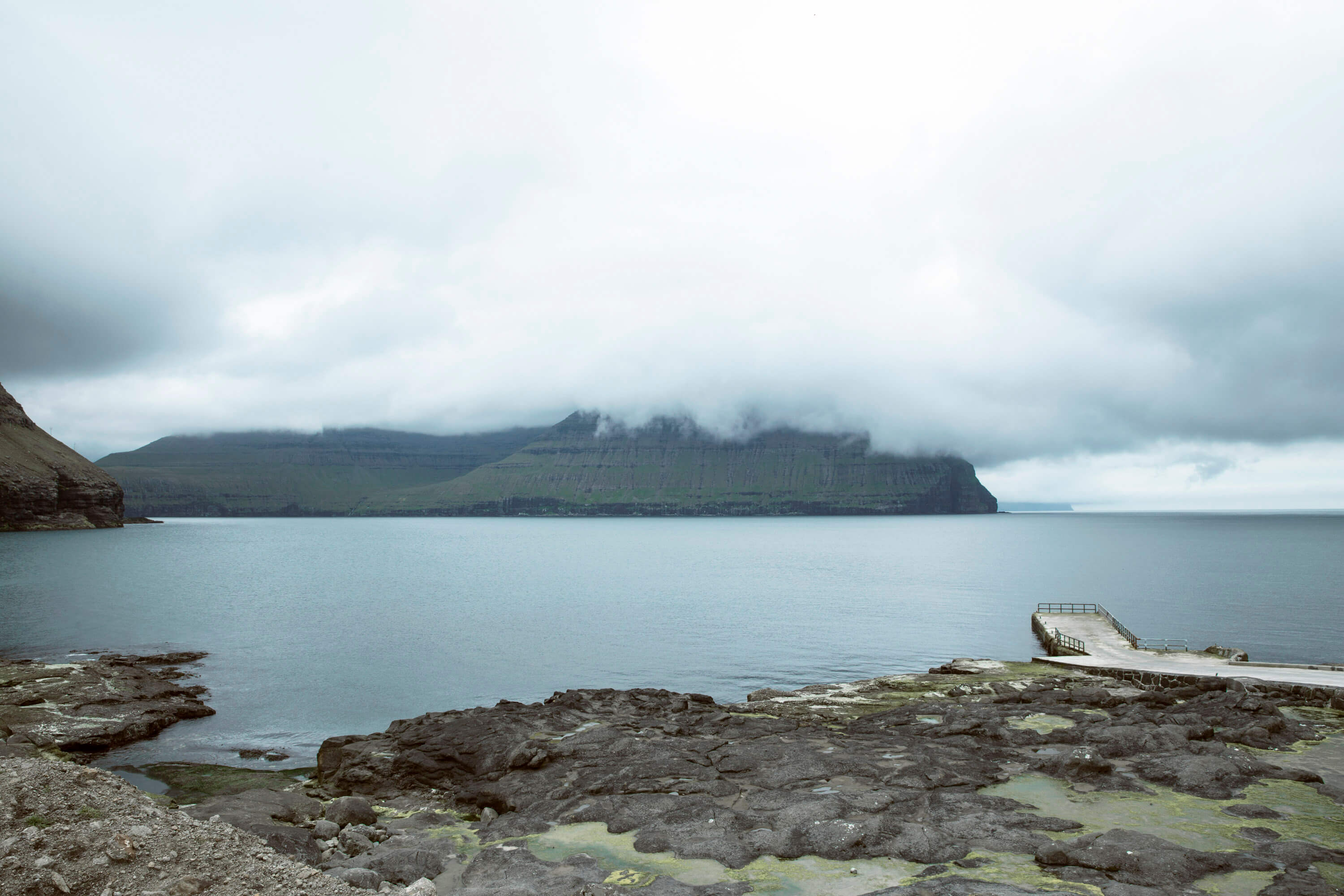
Summer
The day of my return I arrived early at the airport of Vagar as you do for international flights, even though I knew that it would not be very different from the airy waiting room of a modern bus station. I told myself I’d take the opportunity to open my Word document on the Faroes. Only then did I realize that I had to write down what this place was like straight away, before sleeping on it, because then, like all extraordinary things, it would have become normal. There were no trees on the Faroes, just low-lying tundra, but there was thick grass, soft clumps of the brightest, damp green grass, natural pastures for wild horses, sheep with twisted horns and lambs. An undulating desert, like a two-thousand-metre-plus mountain pass, yet anything but barren. Streams snaked through volcanic rocks. At times they became more powerful and formed waterfalls, though even the biggest in the archipelago were never frightening or really majestic. Primeval and sweetly alien, deep down I felt that they belonged to nature and were separate from me as a human.
That summer I wouldn’t see night fall over the fjords and bays from my bed, I’d close layers of curtains over evenings with a soft and feminine light. Looking up from my Mac, I was again in a moment of salutation, in adolescence loaded with the tenderness of an adieu. A crowd of scouts from some big Danish city were finishing off their summer camp in the islands. My eyes dwelled too long on the bodies of some of them – their pink colour, smattering of freckles, big ears, unordinary beauty, unisex uniform, proud stature. I kept saying to myself that it was youth that reigned there and I struggled to remember if I had seen an old person recently.
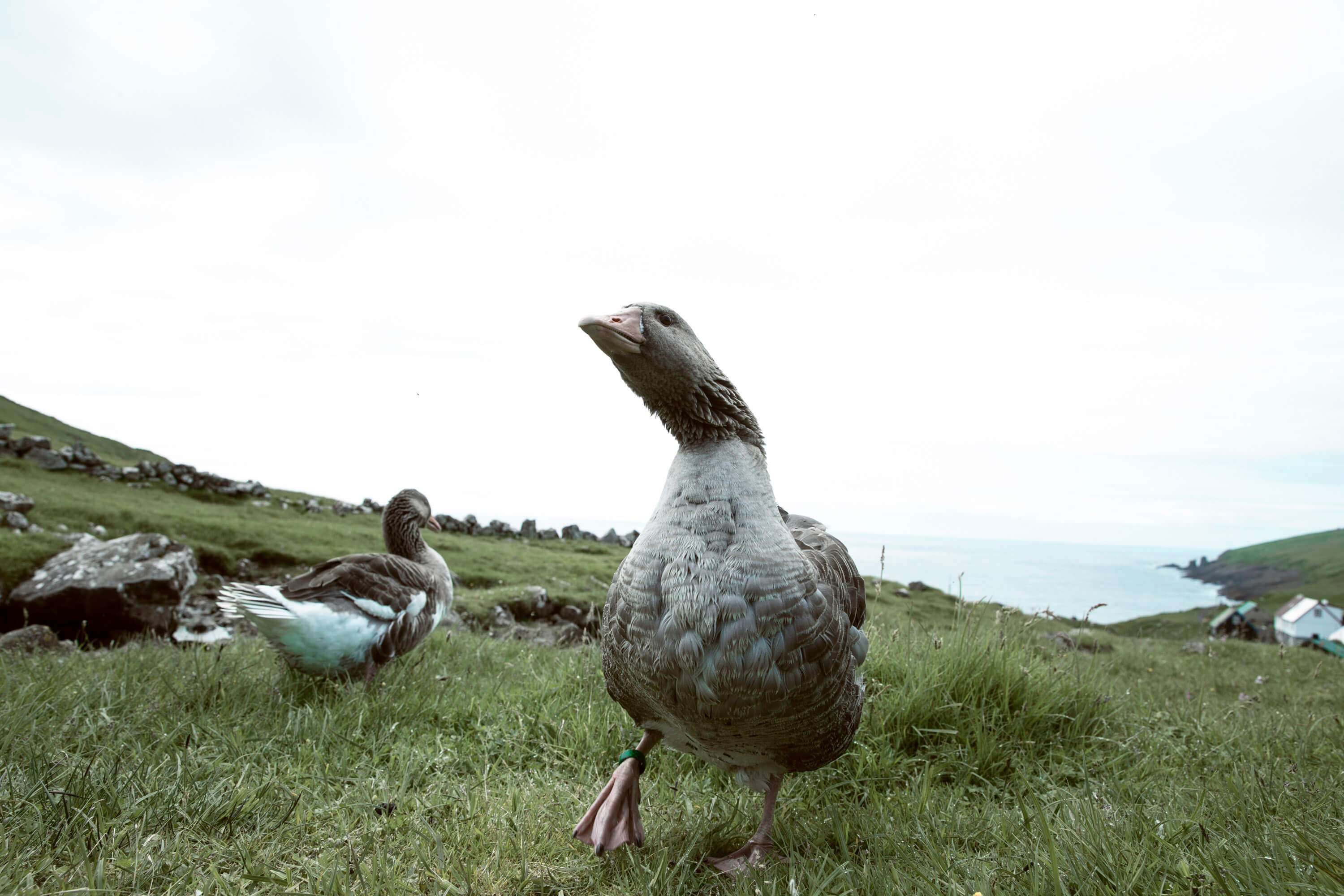
I wondered where that place was similar to. We always look for shared memories to describe what we think is new. The dry-stone walls and the serene solitude of the Irish Aran islands; the silky bays, teeming with fish, of the Kamchatka; the baggage carousel in Nome (Alaska); the mysterious tundra, again in Alaska, on the coast overlooking the Bering Sea; the colourful, little picture-postcard villages looking onto the Arctic; the lingering fragrance of wild red salmon in any part of the world; the childlike simplicity of cardamom-flavoured Belgian waffles; the amazement felt at the Albula Pass in the Swiss summer; the tunnels worthy of fairytales, tiny black holes in the green mountains.
That year my flight would stop off in Copenhagen before landing in Milan. There weren’t any direct flights from Italy anymore, but that hadn’t put me off crossing the Faroes, from one extreme to the other, one July when there are almost twenty hours’ daylight and you can stumble upon a splendid summer day in Mykines. Xavier and I wrote to each other from time to time, in January his girlfriend left him for a week and went away by herself while he played the full-time parent. He said that our meeting had encouraged him to go on with his plan to lead a life following our innermost instincts, free from the spangles and artificiality, pure.
I didn’t tell him that for me the Faroes had exactly the character he was trying to express: instinctive, free and pure. And I wonder where he had slept that night, after we said goodbye in Gota at the stop of the first bus headed to the capital. He’d have got off where the number 10 meets the 62 northbound, going past the Fossá waterfall, then he’d have walked in the evening light along the only strip of tarmac winding towards the village of Gjógv, and waved to the children playing in the three boats in the round, freezing-cold, freshwater pool. I hope that at the end of all this walking, he asked for the corner room in the only inn in the village, the room with the view over the high pastures to the left and the bay to the right, splendid in the early-morning light.
